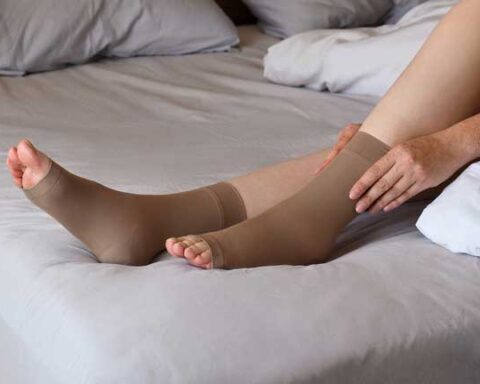Musculoskeletal disorders (MSDs) are a common and often debilitating problem affecting millions of people worldwide. These conditions affect the muscles, bones and joints, causing discomfort that can disrupt daily tasks and work performance.
This blog explores the common causes of MSDs and highlights strategies to minimise their risk in the workplace.
Understanding Musculoskeletal Disorders
Musculoskeletal disorders consist of a wide range of conditions affecting the body’s musculoskeletal system, which includes muscles, tendons, ligaments, nerves, discs, blood vessels and more. MSDs can result from various factors, including repetitive motion, overuse and poor posture.
Common Types of Musculoskeletal Disorders
- Carpal Tunnel Syndrome: This disorder arises when the median nerve becomes compressed at the wrist, causing numbness, tingling and weakness in the hand.
- Tendonitis: Inflammation or irritation of a tendon, frequently caused by repetitive motions, can lead to pain and tenderness around the impacted joint.
- Osteoarthritis: Inflammation or irritation of a tendon, frequently caused by repetitive motions, can lead to pain and tenderness around the impacted joint.
- Lower Back Pain: Commonly caused by poor posture, heavy lifting or sudden movements, leading to chronic pain in the lower back area.
- Rheumatoid Arthritis: Inflammation or irritation of a tendon, frequently caused by repetitive motions, can lead to pain and tenderness around the impacted joint.
Causes of Musculoskeletal Disorders
Understanding the causes of MSDs is crucial in developing effective prevention and management strategies. MSDs can result from various factors, including:
Repetitive Movements
Continuous repetition of the same motion, particularly in the workplace, can strain muscles and tendons, leading to tendonitis and carpal tunnel syndrome.
Poor Posture
Maintaining improper posture over extended periods can stress the musculoskeletal system, causing lower back pain and neck strain.
Overexertion
Lifting heavy items or participating in activities that demand excessive physical exertion can harm muscles, ligaments and discs, leading to musculoskeletal disorders (MSDs).
Lack of Physical Activity
A sedentary lifestyle weakens muscles and joints, making them more susceptible to injuries and disorders.
Ergonomic Issues
Poorly designed workstations can contribute to developing MSDs. Incorrectly positioned keyboards, monitors and chairs can lead to strain and discomfort.
Prevention and Management Strategies for Musculoskeletal Disorders
Preventing and managing MSDs requires a multifaceted approach, focusing on proper training, exercise and ergonomic adjustments. Key strategies include:
Manual Handling Risk Assessment
Conducting a manual handling risk assessment for tasks that require manual handling, such as lifting, pushing or pulling objects, is essential. It helps identify potential risks to workers and implement measures to mitigate them.
- Identify Hazards: Look for tasks that involve heavy lifting, awkward postures or repetitive movements.
- Evaluate Risks: Assess the severity of the identified hazards and determine the likelihood of injuries occurring.
- Implement Controls: Introduce measures to mitigate the identified risks, such as using mechanical aids, redesigning workstations and providing training on proper lifting techniques.
Ergonomic Adjustments
Making ergonomic adjustments in the workplace can significantly reduce the risk of MSDs. This includes ensuring that workstations promote proper posture and minimise strain.
- Adjustable Chairs: Use chairs that support the lower back and can be adjusted for height and angle.
- Monitor Placement: Position the monitor at eye level to prevent neck strain.
- Keyboard and Mouse: Ensure keyboards and mice are positioned for neutral wrist positions.
Training and Education
Training and education on proper techniques and ergonomics can empower individuals to protect themselves from MSDs.
- Proper Lifting Techniques: Educate workers on the appropriate technique for lifting objects, utilising their legs instead of their backs.
- Posture and Movement: Educate individuals on maintaining good posture and avoiding repetitive movements.
- Ergonomic Principles: Guide employees on setting up ergonomic workstations to minimise strain.
Regular Breaks and Micro-Movements
Incorporating regular breaks and micro-movements into the workday can help prevent MSDs by reducing prolonged static postures and encouraging movement.
Scheduled Breaks: Encourage employees to take short, frequent breaks to stand, stretch and move around.
Micro-Movements: Promote simple exercises and movements, such as stretching arms and legs, rolling shoulders and rotating the neck, to keep muscles active and flexible.
Exercise and Physical Fitness
Promoting regular exercise and physical fitness can enhance overall musculoskeletal health, reducing the risk of MSDs.
Strength Training: Encourage strength training exercises that focus on the core, back and leg muscles to improve stability and reduce injury risk.
Flexibility Exercises: Incorporate flexibility exercises, such as yoga or stretching routines, to maintain a full range of motion in joints and muscles.
Aerobic Activities: Support aerobic activities like walking, swimming or cycling to improve cardiovascular health and overall endurance.
Importance of Manual Handling Training
Manual handling tasks, including lifting, carrying and moving items, are commonplace in many workplaces and present substantial risks for musculoskeletal disorders (MSDs). Proper manual handling training can help reduce these risks and support well-being.
Critical Components of Manual Handling Training
- Understanding Risks: The training should include information about the potential manual handling risks and how they can contribute to developing MSDs.
- Safe Lifting Techniques: It should teach workers techniques for lifting objects safely, using their legs and keeping their backs straight.
- Workstation Ergonomics: It should guide employees on how to set up workstations to minimise awkward postures.
- Use of Equipment: The training should also cover the use of lifting aids and equipment to reduce the strain on the body.
Benefits of Manual Handling Training
- Reduced Injury Rates: Proper training reduces the incidence of injuries related to manual handling tasks.
- Increased Productivity: Healthy workers are more productive and less likely to take time off due to injuries.
- Improved Employee Morale: Investing in training demonstrates a commitment to employee well-being, boosting morale and job satisfaction.
Conclusion
Musculoskeletal disorders significantly impact individuals’ quality of life and productivity. However, with proper training, exercise and ergonomic adjustments, the risk of MSDs can be substantially reduced. Conducting manual handling risk assessments, educating on safe techniques, encouraging breaks and promoting physical activity are essential strategies for preventing and managing musculoskeletal disorders. By prioritising these measures, individuals and organisations can enhance musculoskeletal health and overall well-being
Keep an eye for more news & updates on EssentialTribune!








